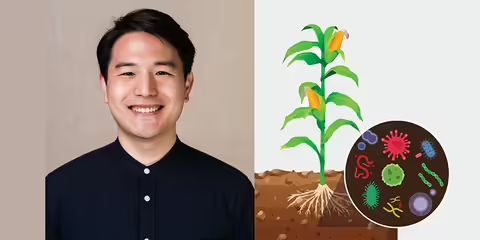
URBANA, Ill. – Although about 20% of Illinois cropping systems are planted to continuous corn, it’s nearly impossible to find fields planted this way for decades at a time. Yet long-term experiments like one at the University of Illinois, including over 40 years of continuous corn under different nitrogen fertilizer rates, provide incredible learning opportunities and soil management lessons for researchers and farmers alike.
That’s particularly true for studies of the soil microbiome, including two led by Nakian Kim, a doctoral graduate from the Department of Crop Sciences at U of I. For Kim, the long-term experiment provided a unique, biologically stable setting to explore baselines and observe microbial responses to the inclusion of cover crops, a change in management introduced in 2018 and supported by a USDA-NIFA award to María Villamil’s team.
Importantly, Kim found short-term use of cover crops can’t undo decades of soil microbial dynamics in response to continuous corn and heavy nitrogen fertilizer use.
“In the Midwest, our soils are healthy and resilient, but we shouldn’t overestimate them. A soil under unsustainable practices for too long might reach an irreversible threshold,” Kim says.
In his first study, published in Agronomy, Kim characterized shifts in microbial communities at the genus level, a far higher taxonomic resolution than previous studies. The more detailed view of the microbial community revealed indicator genera representing critical aspects of soil health and function.
Read more from the College of Agricultural, Consumer & Environmental Sciences
The Department of Crop Sciences is in the College of Agricultural, Consumer and Environmental Sciences at the University of Illinois Urbana-Champaign.
